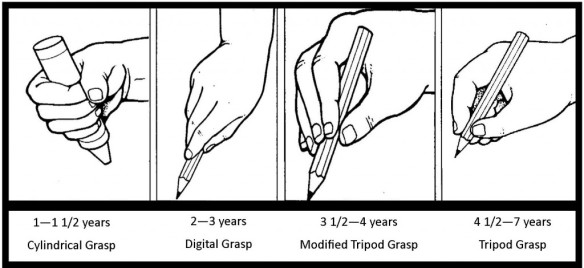Embrace Your Child’s Artistic Journey: A Guide to Drawing Development
Welcome, wonderful parents! Are you ready to dive into the colorful world of your child’s drawing development? It’s an adventure that’s as joyful as a splash in a puddle on a rainy day. Rest assured, this guide is your handy companion to understanding the doodles, stick figures, and bursts of creativity that are milestones in your little one’s growth. So, let those tiny hands grab a crayon, and let’s embark on this artistic journey together!
Why Drawing Matters for Your Bundle of Joy
Drawing is far more than just a fun activity. It’s the pencil and paper tango where fine motor skills meet imagination. As your kids express themselves through shapes and scribbles, they are laying the foundation for writing, problem-solving, and even emotional health. Have you ever noticed how the biggest of grins accompany those squiggly lines? That’s the magic of drawing!
From Scribbles to Masterpieces: The Stages of Drawing Development
Every child’s journey with drawing unfolds in wondrous ways. Understanding these stages will help you to nurture their skills and appreciate the special meaning behind each stroke. So, let’s sketch out the steps your young artists will hop, skip, and jump through:
- Random Scribbling (15 months to 2.5 years): It may look like a tornado hit the paper, but this is a BIG deal! Your toddler is developing motor control and learning cause and effect.
- Controlled Scribbling (2 to 3 years): Watch those little wrists get steadier as your kid starts to understand that they can actually manage where the crayon goes!
- Named Scribbling (2.5 to 3.5 years): Here come the stories! Those whirls and swirls now have names and meanings, showcasing your child’s blossoming imagination.
- Pre-Schematic Stage (3 to 4 years): Did someone say Picasso? Shapes begin to form and your preschooler’s drawings start to represent real-life objects and experiences.
- Schematic Stage (5 to 8 years): See that circle with lines? That’s a person! Look at how your youngster’s drawings are becoming more structured and symbolic.
- Realism Stage (9 to 11 years): Your child’s attention to detail and interest in realism will bloom. It’s like watching their creative voice take flight.
- Pseudo-naturalistic Stage (12 years and up): Self-expression and peer influence might steer your teen’s drawings. It’s their heart and soul on paper.
How to Support Your Mini-Monet’s Drawing Development
Being Picasso’s parent isn’t just about cheering from the sidelines. You can be their coach too! Here are some tips to nurture their natural talents:
- Provide a variety of materials: Offer crayons, markers, colored pencils, and loads of paper. Mix it up with paints and brushes for a splashing day of fun!
- Create a creative space: Dedicate a corner of your home where your kid can be free to scribble, sketch, and splatter to their heart’s content.
- Embrace the mess: Trust us, the magic happens when they’re knee-deep in creativity (and maybe a little paint). Don’t sweat the splatters!
- Celebrate every creation: Every piece of art is a masterpiece to be proud of. Display their artwork on the fridge or in a special album they can flip through. It’s their personal gallery!
- Never criticize: Remember, your floor might be their Sistine Chapel’s ceiling. Offer guidance gently and praise their effort.
- Draw with them: Grab a crayon and join the fun! When you draw together, you’re showing them that creativity is a family value.
The beauty of a child’s drawing journey is in every line and squiggle that tells their unique story. As you encourage their creativity, you’re also fostering essential skills that will flourish throughout their life. Remember to cherish this special time; before you know it, you’ll be framing these early masterpieces as keepsakes of their childhood. And who knows? You might just have a little da Vinci in the making!

Five Things Parents Should Know in Preparing for Drawing Development
As you cheer on your child’s artistic explorations, here are five essential insights to prep you for their drawing development:
- Set the Stage for Success: Little artists need a place where they can be messy, loud, and fully themselves. By setting up an art-friendly zone, you’re telling them, “This is your space to create!”
- Encourage Process Over Product: What matters most is the joy they find in making art, not the end result. Celebrate their artistic process, and they’ll learn to love art for life.
- Understand That Development Is Unique: Like snowflakes, no two kiddos are alike. One may draw perfect circles at 3, while another might prefer imaginative squiggles. Each child’s timeline is special.
- Watch for Emerging Interests: Your child’s drawings will hint at their passions. From dinosaurs to superheroes, these loves are golden pathways to engaging their minds and hearts.
- Remember That Praise Is Powerful: When you light up at their art, you’re lighting up their world. Genuine enthusiasm is the jet fuel that propels their creativity to soar.
By weaving these insights into your daily routine, your child’s confidence in their artistic abilities will bloom like a flower in spring. They’ll learn to express their emotions, sharpen their critical thinking, and, most importantly, they’ll know their creativity is valued and loved. Rejoice in every scribble, for each is a step on their grand adventure in art.
Keywords to Encourage Exploration and Creativity in Drawing
While fostering your child’s drawing development, sprinkle in some creativity-boosting keywords that can inspire their artistic side:
- Imagine: Encourage your child to picture things beyond the visible and into the realms of fantasy and innovation.
- Explore: Suggest that they try out different materials, styles, and concepts, reinforcing the idea that discovery is part of the fun.
- Express: Urge them to use drawing as a way to share their feelings and thoughts, reinforcing the emotional value of art.
- Create: Motivate them to bring something unique into the world, underscoring the joy of making something new.
- Play: Remind them that, above all, drawing is a form of play—a fundamental way that children learn and grow.
Armed with these keywords, you can create an environment where creativity knows no bounds, encouraging your child to paint their own picture of the world, both literally and metaphorically. The result will be a richer, more expressive form of drawing that mirrors their innate inventiveness and zest for life.
Drawing development in children is not just about producing art; it’s a fundamental expression of growth and discovery. So, let’s roll out the drawing paper, set out the crayons, and watch your child’s imagination flourish, one delightful dash and dot at a time. Through your support and understanding, your child’s doodles may just be the beginning of an incredible artistic voyage! And together, we’ll watch as each new drawing brings them one step closer to finding their unique voice in the tapestry of life.
See more great Things to Do with Kids in New Zealand here. For more information see here
Disclaimer
The articles available via our website provide general information only and we strongly urge readers to exercise caution and conduct their own thorough research and fact-checking. The information presented should not be taken as absolute truth, and, to the maximum extent permitted by law, we will not be held liable for any inaccuracies or errors in the content. It is essential for individuals to independently verify and validate the information before making any decisions or taking any actions based on the articles.




